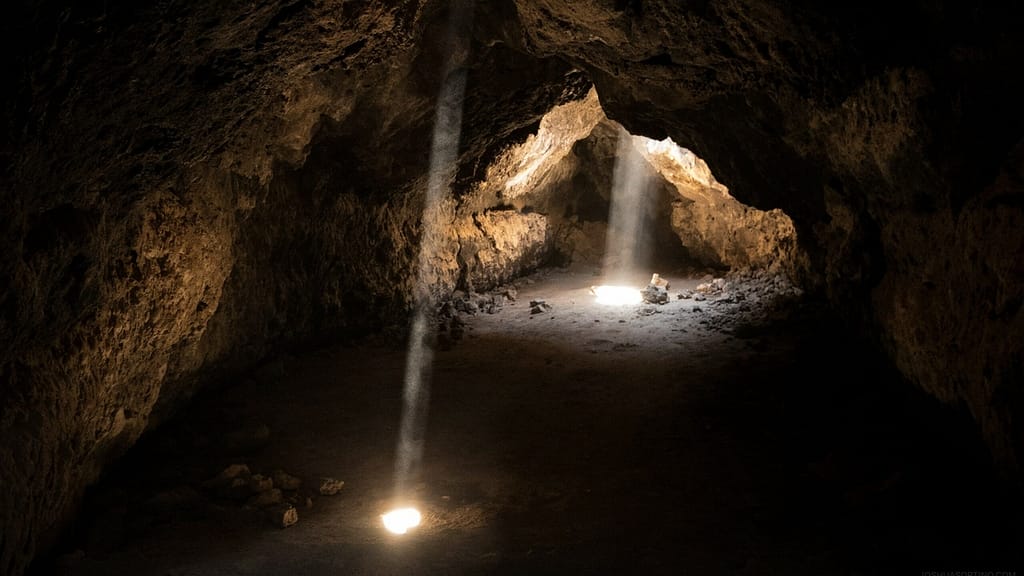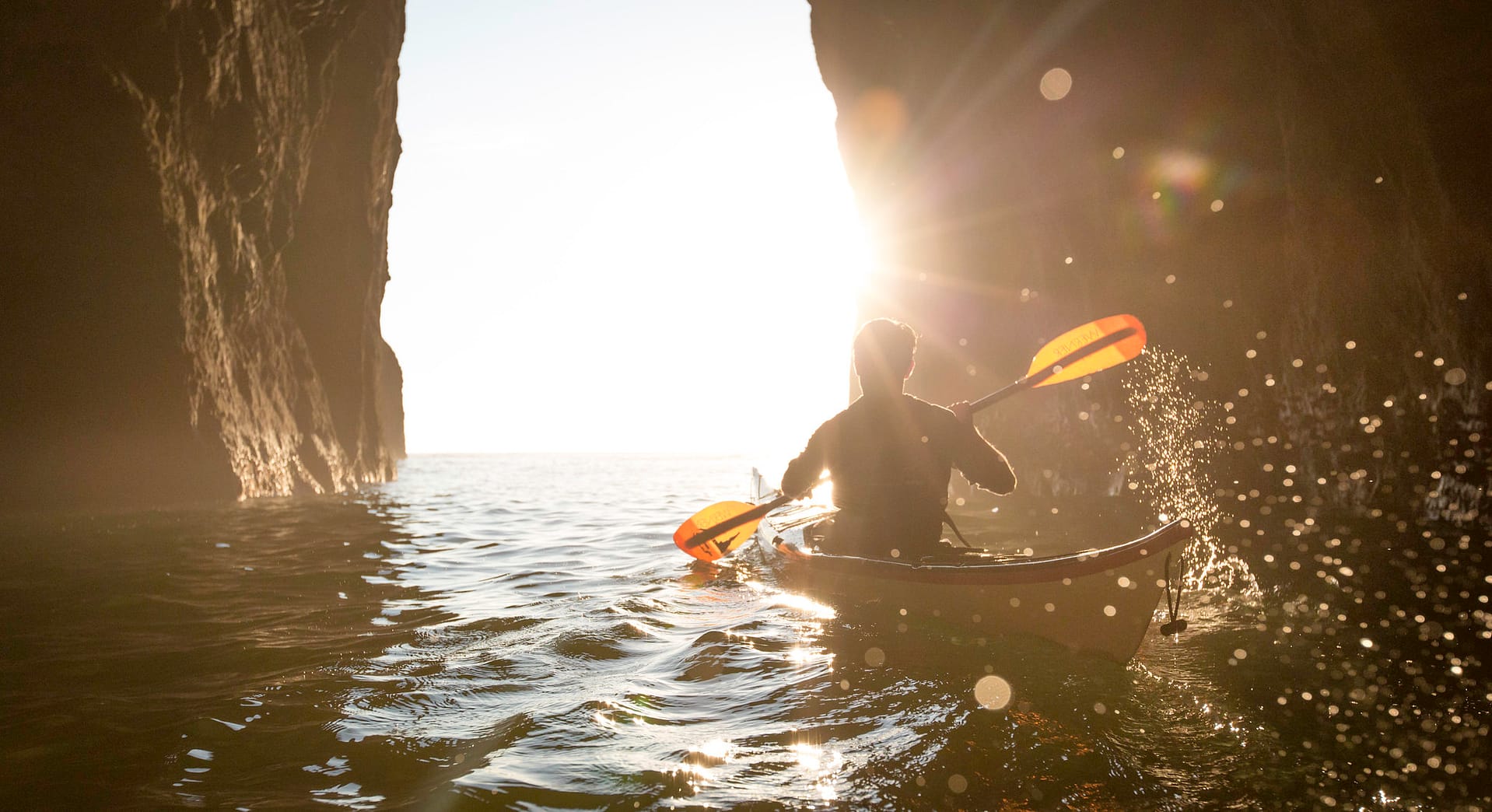This article was originally published on February 5, 2019.
Okay everyone here’s the deal: the entire world is covered in bacteria. Now, most of them are really good for us, but some are bad—like really bad. As in causing millions of people to die, bad. But we’re smart! We’ve come up with ways to defend ourselves from them (thanks, antibiotics). Unfortunately for us, bacteria are survivors, and they’ve been catching onto our tactics, making it harder and harder to keep them at bay. So let’s discover what scientists are doing to stay one step ahead of them.
It turns out, what could save us all from succumbing to a plague of superbug bacteria may be hanging from the ceiling of a cave that scientists are now exploring for the first time.
So as you scroll down this article, we’re going to look closer at what these scientists are working on, how exactly these things growing in caves could protect us all, what this whole antibiotic resistance situation is all about, and most importantly, how totally cool these tiny organisms are!
(I recognize that acknowledging that we’re in very real danger from organisms we can’t even see is scary. But remember, the more we know, the more power we have. And that starts with each and every one of us!)

So… what exactly is this antibiotic resistance?
In short, it’s when bacteria develop the ability to defeat the antibiotics designed to kill them.
Everyone’s goal is to survive, and bacteria have figured ways to defend themselves from the drugs intended to wipe them out. You know how you feel in weather extremes? How you can become “used to” intense heat or cold? You find ways to survive in these situations, right? Well, the bacteria are adapting to live in their environment as well. And what they’re getting used to, unfortunately, is our only current defense against them.
It’s been reported that by 2050 there will be 10 million annual deaths from drug-resistant bacteria. 1
To give us a really great run through of exactly what’s making them drug resistant, I’d like to turn you to this fantastic TED-Ed video from 2014 (this isn’t a new issue at all). They’re one of our favorite channels because they have a knack for explaining complicated and scary ideas in a way that’s easy to absorb (and they utilize all of the greatness that adorable animations bring to the experience). After this, we’ll get to see what those scientists are doing in the caves!
You really have to hand it to them: bacteria are super smart.
They’ve been surviving here for approximately 3.8 billion years, so they’ve gotten pretty good at bouncing back from threats. And they’ve only been dealing with us for what must seem like a blink of time to them. I’m sure they have a few more tricks up their metaphorical sleeves than we do!
If you’d like to see more from TED-Ed, click here to head over to their entire channel. But be warned: it’s a place that will you will leave knowing a new interesting fact so if you aren’t prepared to tell all of your friends about it and risk the chance of telling the same friend more than once, it’s probably not for you.
Now, to the Bats in the Cave!
Oh yeah, did I mention our survival also depends on the survival of bats? Surprise!
In the following video, the fantastic channel, Seeker, introduces us to Dr. Naowarat “Ann” Cheeptham, who is one of the scientists working hard to figure out the potential in these newly explored Iron Curtain caves in Canada, as well as other caves around the world.
We’ll learn what it’s like to crawl through tight spaces 30 feet down into the earth to study the ancient bacteria living there, some of what they’re doing in the labs, how probable it is that these caves hold what we need, and the next steps we all need to consider!
We’ll also look closer to how the health of bats will directly impact how plentiful our possible hero bacteria is! It’s all pretty fascinating, but see what you think:
This entire situation is pretty wild, isn’t it?
If you’d like to dive in and learn more about the progress other scientists and innovators around the world are making, please click here to explore more of Seekers channel! They’re one of our favorites for a reason.
Bacteria don’t care who you are, where you’re from, or what you do.
Unlike the Backstreet Boys though, they could care less about whether you love them or not. (If this reference is lost on you, click here to listen to one of the songs that shaped my childhood.)
These deadly bacteria won’t take into account how much money you have, all of the good you’re doing in your life, the number of people that are counting on you, or all of the plans you have for your future.
All they care about is that you have a human body, and they want to colonize it.
To quote another piece of pop culture that shaped my childhood, “We’re all in this together.” The choices that each and every one of us make really do affect the people around us. You can learn more about the actions that are leading the bacteria becoming more drug resistant by reading this article from the Center for Disease Control (CDC).
Oh but also, please take your entire dose of antibiotics.
Stop saving them for later and set an alarm or something so you don’t forget. If you don’t take your entire prescribed course—even if you’re feeling better—you won’t kill all of the bacteria making you sick. I asked our founder, Dr. Lynda Ulrich, how she explains this to her patients:
“Keep in mind that when you take an antibiotic the weaker bugs die on day one through five. But the meanest bugs do not die until day nine and ten. If you stop a course of antibiotics early, then the meanest bugs will be the ones left to repopulate your body and you’ll be in real trouble!”
On the flip side, if you’re taking antibiotics all the time for everything, all of your good bacteria will be killed off and it will be harder for them to come back and defeat the bad. And as we’ve learned, those ones who survive can grow stronger.
The Mayo Clinic has a great article from 2018 explaining all of this in detail and the proper antibiotic etiquette to adopt. You can read that article by clicking here.
Want to learn about our history with deadly bacteria?
It’s fascinating! As I’ve said in this article before, the more we know, the more we can protect ourselves. So I’d like to direct you to the podcast, This Podcast Will Kill You. Every episode gives us a glimpse into our experiences with diseases, both bacterial and viral; tells us how they function, the damage they’ve caused, and how they were held at bay (or not).
Here’s one episode to get you started! It’s all about antibiotic resistance and the bacterium Staphylococcus aureus, which we heard a little about in the TED-Ed video above. (Remember MRSA?)
This Podcast Will Kill You has quickly become one of my listening gotos. You can find the rest of their fascinating episodes and be completely floored by the power of microscopic organisms by following this link!
So why is a piece about deadly bacteria and antibiotic resistance on a website about what’s amazing in the world? Well, bacteria are really cool!
And they have a huge part in making our world as amazing as it is. (Really, we’d be nothing without them.)
If you step back from the fact that some of them may kill us all, you’ll see an organism that has been around since the beginning of… well, everything. They’ve been figuring out ways to survive longer than our concept of time—and some of them are our good friends!
You can learn more about our relationship with them (and the other creatures on and in our body) makes us who we are in this following article:
Saving our lives with the help of others!
If that isn’t enough to want to better the health of our planet and all of the species we share it with, I don’t know what is. We’re connected to everything else in the world in so many ways, and we’re discovering more every single day!
Doesn’t it all make you wonder if we’re working with nature in the most effective way? We’re only one species in a planet of millions; can you imagine all of the possible ways we could all impact each other?
We have so many examples of our own lives becoming better by teaming up with nature in the articles on our site. To begin dipping your toe into this idea, here’s three of them:
But really, we’ve published this article because we need to know there are actions being taken.
There are people diligently working to save our lives. And we have a privilege now that people before us didn’t when they were battling against the bacteria. Because of the advancements in technology and the sharing on online social platforms, we get to be clued in on how scientists are making these discoveries. And it’s all really fascinating!
So we’re taking advantage of it. You never know whose mind the next idea that saves us will come from.
Stay open to new possibilities!
- Sam
“No problem can be solved from the same level of consciousness that created it.”
—Albert Einstein

Don’t miss out on a single article!
Enjoy unlimited access to over 500 articles & podcast that give you a positive perspective on the state of the world and show you practical ways you can help.
Notes:
- Walsh, Fergus. “Superbugs to Kill ‘More than Cancer’ by 2050.” BBC News, BBC, 11 Dec. 2014, www.bbc.com/news/health-30416844. Accessed 28 Jan. 2019. ↩
- “What Causes Antibiotic Resistance? – Kevin Wu.” YouTube, TED-Ed, 7 Aug. 2014, www.youtube.com/watch?v=znnp-Ivj2ek&feature=youtu.be. Accessed 24 Jan. 2019. ↩
- “Is the Cure for Superbugs Hiding Deep Under the Earth?” YouTube, Seeker, 21 Jan. 2019, www.youtube.com/watch?v=wu6kc8KIGXs&feature=youtu.be. Accessed 24 Jan. 2019. ↩








